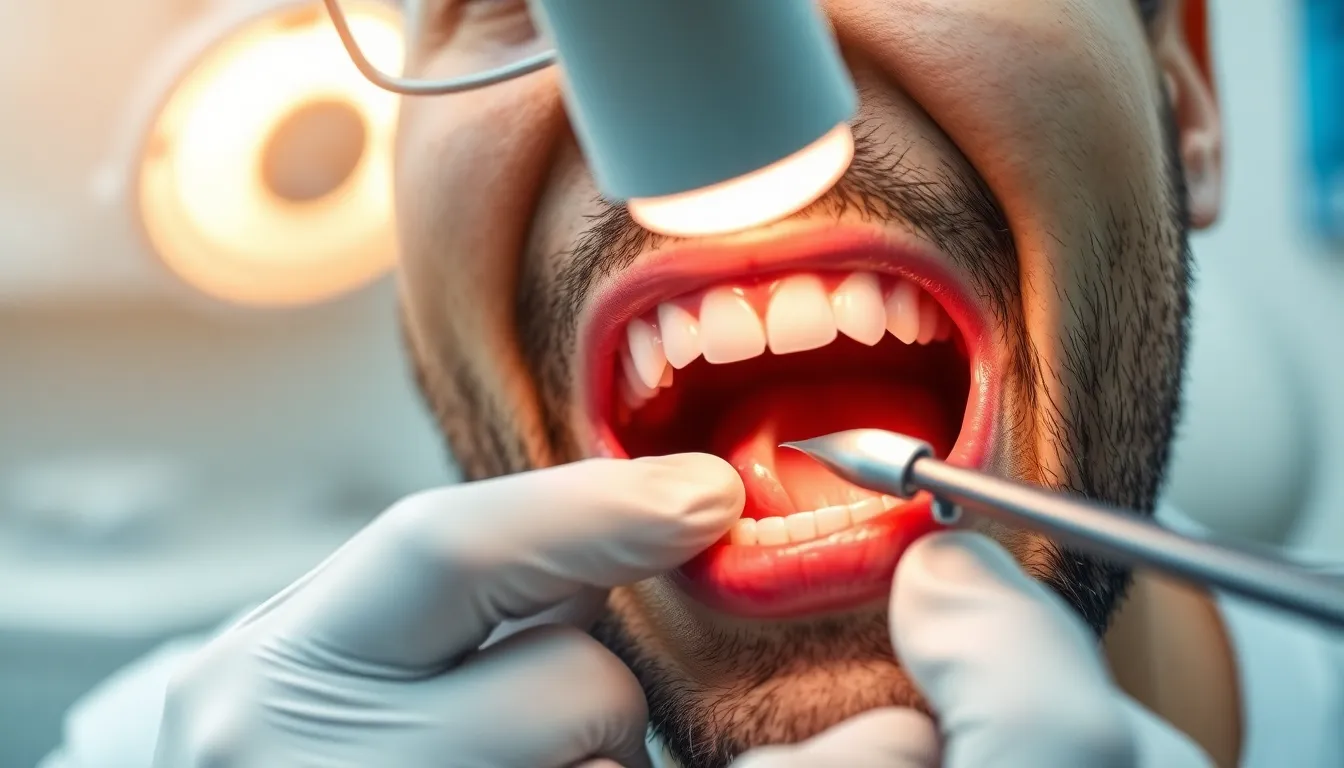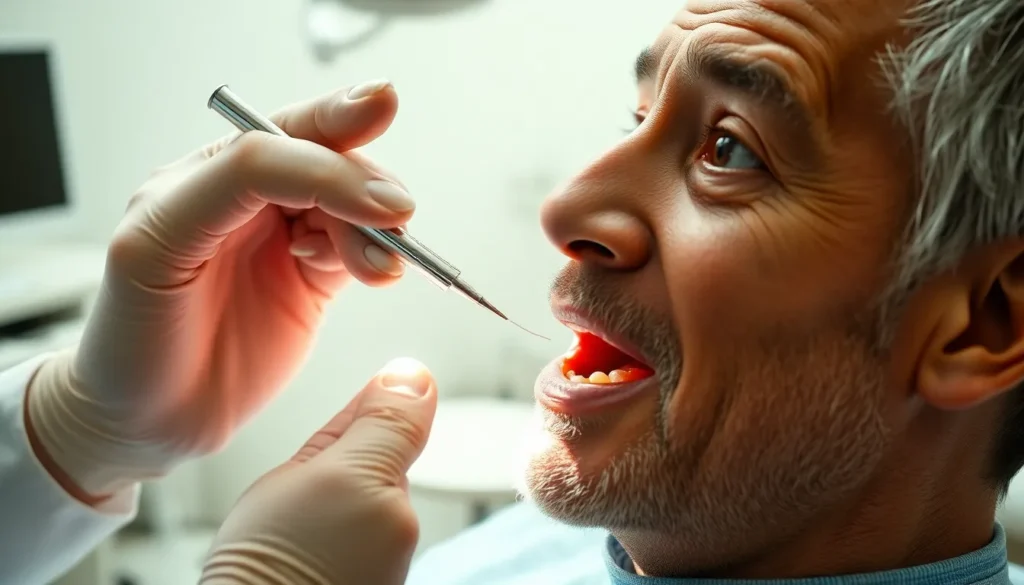Have you noticed a cracked filling in your tooth recently? This common dental issue shouldn’t be ignored, as it can lead to more serious problems if left untreated. A damaged filling exposes your tooth to bacteria and may cause sensitivity, pain, or further decay.
When your dental filling cracks or breaks, it no longer provides the protection your tooth needs. Whether it’s due to grinding your teeth, biting down on hard foods, or simply wear and tear over time, a compromised filling requires prompt attention. Understanding the causes, symptoms, and treatment options will help you take the right steps to protect your oral health and prevent complications.
What Is a Cracked Filling and Why Does It Happen?
A cracked filling occurs when the dental material used to repair a cavity develops fractures or breaks. These cracks can range from microscopic fissures to complete breaks that compromise the entire restoration.
Common Causes of Cracked Fillings
Dental fillings crack due to several identifiable factors. Teeth grinding (bruxism) exerts excessive pressure on fillings, gradually wearing them down and creating fractures. Biting hard objects like ice, nuts, or candy puts sudden stress on fillings that they weren’t designed to withstand. Temperature fluctuations from consuming very hot or cold foods can cause expansion and contraction of filling materials, leading to cracks over time. Age also plays a important role as most fillings have a lifespan of 5-15 years depending on the material used and location in the mouth.
Dr. Harris often shares that “I’ve seen patients who’ve had the same filling for 20+ years come in surprised when it finally fails. Materials degrade naturally over time, no matter how well you care for them.”
Signs Your Filling May Be Cracked
Detecting a cracked filling early helps prevent further complications. Sharp pain when biting down indicates pressure on the damaged area. Sensitivity to hot, cold, or sweet items suggests the inner tooth structure is exposed. Food consistently getting stuck around a exact tooth points to changes in the filling’s integrity. Rough edges felt by your tongue signal physical breakdown of the restoration. Visible lines or fractures sometimes appear on the filling surface, though these aren’t always visible without magnification.
The Risks of Ignoring a Cracked Filling

Ignoring a cracked filling creates a gateway for bacteria to enter the space between your filling and tooth, compromising the protective seal. This bacterial invasion leads to decay beneath the filling that often progresses silently until important damage occurs.
Potential Complications for Oral Health
A cracked filling threatens your overall oral health in multiple ways. Tooth sensitivity increases dramatically when hot, cold, or sweet foods contact the exposed dentin through the crack. Bacteria infiltrating the damaged area cause new decay that can quickly progress to painful infections in your tooth pulp. Food particles and bacteria trapped in the crack often lead to gum inflammation and periodontal problems around the affected tooth. Your tooth structure weakens significantly without proper protection, making it susceptible to further fractures or complete breakage. Many patients experience sharp pain when biting down as the crack deepens, a warning sign that shouldn’t be ignored.
Dr. Harris recently treated a patient who dismissed a small crack in her molar filling for months. “By the time she came in,” he explains, “what could have been a simple filling replacement had progressed to requiring a full root canal and crown due to extensive decay that had reached the nerve.”
When a Cracked Filling Becomes an Emergency
Your cracked filling requires immediate attention when severe pain develops suddenly or persists throughout the day. Swelling around the tooth indicates infection has likely developed and requires urgent intervention. Persistent sensitivity that doesn’t fade after stimulus removal suggests nerve involvement that needs prompt treatment. Infections from cracked fillings can progress rapidly, potentially forming abscesses that spread to surrounding tissues if not addressed quickly. Treatment options for emergency situations include replacing the damaged filling, placing a protective crown, performing root canal therapy to remove infected pulp, or extracting the tooth in severe cases where saving it isn’t possible.
Treatment Options for a Cracked Filling

A cracked filling requires prompt dental attention to prevent further damage to your tooth. Treatment options vary depending on the severity and extent of the crack, with answers ranging from simple repairs to complete replacement procedures.
Repair vs. Replacement
Dental professionals evaluate the condition of your cracked filling to determine whether repair or replacement is the better option. Minor cracks or small breaks often respond well to bonding techniques that preserve more of your natural tooth structure. The bonding process involves applying tooth-colored resin to fill in small cracks, providing a less invasive solution that maintains tooth integrity. Replacement becomes necessary when cracks are larger or the current filling cannot be effectively repaired. Each replacement requires removing more tooth structure than the previous filling, creating a limit to how many times this process can be repeated on a single tooth. Many patients find that after multiple replacements, a crown becomes the preferable alternative to preserve remaining tooth structure.
Dr. Todd B. Harris notes, “I’ve seen many patients who delayed replacing a cracked filling, only to discover that what could have been a simple procedure eventually required more extensive treatment. Addressing these issues early typically results in more conservative treatment options.”
Modern Materials for Durable Fillings
Dental materials have evolved significantly, offering more durable and aesthetically pleasing options for filling replacements. Composite resins provide tooth-colored alternatives that bond directly to your tooth surface, lasting up to 10 years with proper care. These materials blend seamlessly with your natural teeth while providing excellent durability for most dental restorations. Porcelain inlays, onlays, and crowns offer superior strength and natural appearance for larger restorations, especially in teeth that endure important chewing forces. For cases requiring extraction due to extensive damage, biocompatible titanium implants create stable, long-lasting replacements that function like natural teeth.
One patient’s experience highlights the importance of modern materials: “After my third filling replacement, my dentist recommended a porcelain crown. It’s been five years now, and the crown looks and feels just like my natural tooth—I wish I’d chosen this option sooner instead of going through multiple filling replacements.”
Treatment for cracked fillings might also include root canal therapy if the crack extends into the tooth pulp, causing infection or important pain. In severe cases where cracks extend below the gum line, extraction followed by implant placement may provide the most predictable long-term solution. Dental professionals typically recommend the most conservative treatment option that will effectively restore both function and appearance while preventing further tooth damage.
Preventing Future Filling Failures

Extending the lifespan of your dental fillings requires proactive care and attention to daily habits. Proper maintenance not only preserves your fillings but also protects your overall oral health from complications that can arise from filling failures.
Proper Oral Hygiene Practices
Brushing twice daily with fluoride toothpaste and a soft-bristled toothbrush removes plaque that can accumulate around filling edges. Daily flossing cleans tight spaces between teeth and around fillings where decay commonly begins, preventing bacteria from compromising the seal between your filling and tooth structure. Adding an antibacterial mouthwash to your routine reduces harmful bacteria that contribute to decay and gum disease, creating a protective environment for your fillings.
Dr. Todd B. Harris notes, “Many patients don’t realize that maintaining the area around a filling is just as important as the filling itself. I’ve seen countless cases where excellent oral hygiene has extended filling longevity by 5+ years compared to patients with poor habits.”
Lifestyle Adjustments to Protect Your Fillings
Avoiding hard foods like ice, nuts, and hard candy prevents direct trauma to fillings that can cause immediate cracks or fractures. Sticky foods such as caramel and taffy create pulling forces that can gradually dislodge fillings, especially older ones with compromised margins. Patients who grind or clench their teeth benefit significantly from custom nightguards, which distribute pressure evenly and protect fillings from excessive force.
Regular dental check-ups every six months allow for professional assessment of filling integrity through visual examination and X-rays, catching minor issues before they require extensive treatment. Choosing softer foods and maintaining proper chewing habits reduces constant stress on filled teeth, particularly valuable for patients with multiple or large fillings.
When to See Your Dentist About a Cracked Filling

A cracked filling constitutes a dental emergency that requires immediate professional attention. Delaying treatment can lead to further damage or infection that compromises your oral health. You’ll need to contact your dentist as soon as you notice any symptoms or suspect a crack in your filling.
Urgent Symptoms Requiring Immediate Attention
Several warning signs indicate it’s time to schedule an emergency dental appointment:
- Sharp pain when biting down or releasing pressure during chewing
- Sudden sensitivity to hot, cold, or sweet foods and beverages
- Persistent toothache or discomfort around the filled tooth
- Noticeable roughness or irregularity when your tongue touches the filling
- Food particles consistently getting trapped near the filling area
- Visible cracks or dark spots on the filling surface
- Discoloration around the filling or unusual bad breath
“I recently had a patient who ignored mild sensitivity around a filled molar for weeks,” shares Dr. Todd B. Harris. “By the time she came in, what started as a tiny crack had allowed bacteria to penetrate deeply, resulting in important decay that required a root canal rather than a simple filling replacement. Early intervention could have saved her considerable pain and expense.”
The Importance of Regular Check-ups
Regular dental check-ups play a crucial role in detecting deteriorating or cracked fillings before they cause important problems. Your dentist can identify microscopic cracks during routine examinations that aren’t visible to the untrained eye. X-rays often reveal hidden damage beneath fillings that might otherwise go unnoticed until substantial decay develops.
Over-the-counter pain relievers only mask symptoms temporarily without addressing the underlying issue. They don’t prevent bacteria from entering the crack and causing further damage to your tooth structure. Professional dental evaluation remains the only effective approach to properly diagnose and treat a cracked filling.
Remember that most dental insurance plans cover filling replacements, making prompt treatment both medically necessary and financially sensible. Addressing a cracked filling early typically costs significantly less than the extensive procedures required after prolonged neglect.
Conclusion
A cracked filling shouldn’t be ignored. Taking quick action when you notice any signs of damage protects your tooth from bacteria invasion pain and potentially costly treatments down the road.
Remember that modern dentistry offers many answers from simple repairs to complete replacements using advanced materials that look and function better than ever.
By combining prompt treatment with preventive measures like proper oral hygiene avoiding damaging foods and regular dental check-ups you’ll not only address current issues but also extend the life of all your dental work. Your proactive approach today saves your smile and wallet tomorrow.
Frequently Asked Questions
What is a cracked dental filling?
A cracked dental filling occurs when the material used to repair a cavity develops fractures or breaks. These can range from microscopic fissures to complete breaks in the filling. When a filling cracks, it no longer provides a proper seal, potentially exposing the tooth to bacteria and causing further decay or sensitivity.
What causes dental fillings to crack?
Dental fillings typically crack due to several factors: bruxism (teeth grinding), biting hard foods or objects, temperature fluctuations that cause filling materials to expand and contract, and natural aging of the filling material. Most fillings last between 5-15 years before needing replacement, depending on the material used and oral care habits.
What are the signs of a cracked filling?
Signs of a cracked filling include sharp pain when biting down, increased sensitivity to temperature or sweet foods, food frequently getting stuck around the tooth, rough edges felt by your tongue, and visible cracks on the filling surface. Early detection of these symptoms is crucial for preventing further complications.
Is a cracked filling a dental emergency?
A cracked filling becomes a dental emergency when you experience severe pain, swelling, or signs of infection. However, any cracked filling should be addressed promptly, even without severe symptoms. Ignoring even minor cracks can lead to bacteria infiltration, decay beneath the filling, and potentially more invasive treatments later.
What happens if I ignore a cracked filling?
Ignoring a cracked filling allows bacteria to invade the space beneath it, causing decay that often progresses silently until significant damage occurs. This can lead to increased tooth sensitivity, painful infections, gum inflammation, and weakened tooth structure. What starts as a simple filling replacement can escalate to needing a root canal, crown, or even extraction.
What treatment options are available for cracked fillings?
Treatment options depend on the severity of the crack. Minor cracks may be repaired with bonding techniques, while larger cracks typically require complete filling replacement. In cases where decay has reached the tooth pulp, root canal therapy might be necessary. Severe damage might require extraction and implant placement. Early intervention generally allows for more conservative treatment options.
How long do dental fillings typically last?
Dental fillings generally last between 5-15 years, depending on the material used and your oral care habits. Amalgam (silver) fillings typically last 10-15 years, while composite (tooth-colored) fillings usually last 5-10 years. With excellent oral hygiene and preventive measures, fillings can often exceed their expected lifespan.
How can I prevent my fillings from cracking?
Prevent filling cracks by maintaining proper oral hygiene (brushing with fluoride toothpaste, flossing daily), avoiding hard and sticky foods, using a custom nightguard if you grind your teeth, and attending regular dental check-ups. These preventive measures can significantly extend your filling’s lifespan and protect your overall oral health.
Does dental insurance cover filling replacements?
Most dental insurance plans cover filling replacements, typically categorized as basic restorative procedures. Coverage usually ranges from 70-80% after meeting your deductible. Insurance coverage is another reason to address cracked fillings promptly, as early intervention costs less than the extensive procedures required after prolonged neglect.
Can I tell if my filling needs replacement during a regular check-up?
Yes, regular dental check-ups are essential for detecting deteriorating fillings before they cause significant problems. Dentists can identify microscopic cracks and hidden damage through visual examinations and X-rays that aren’t visible to patients. Most filling failures are discovered during routine dental visits before they cause noticeable symptoms.







